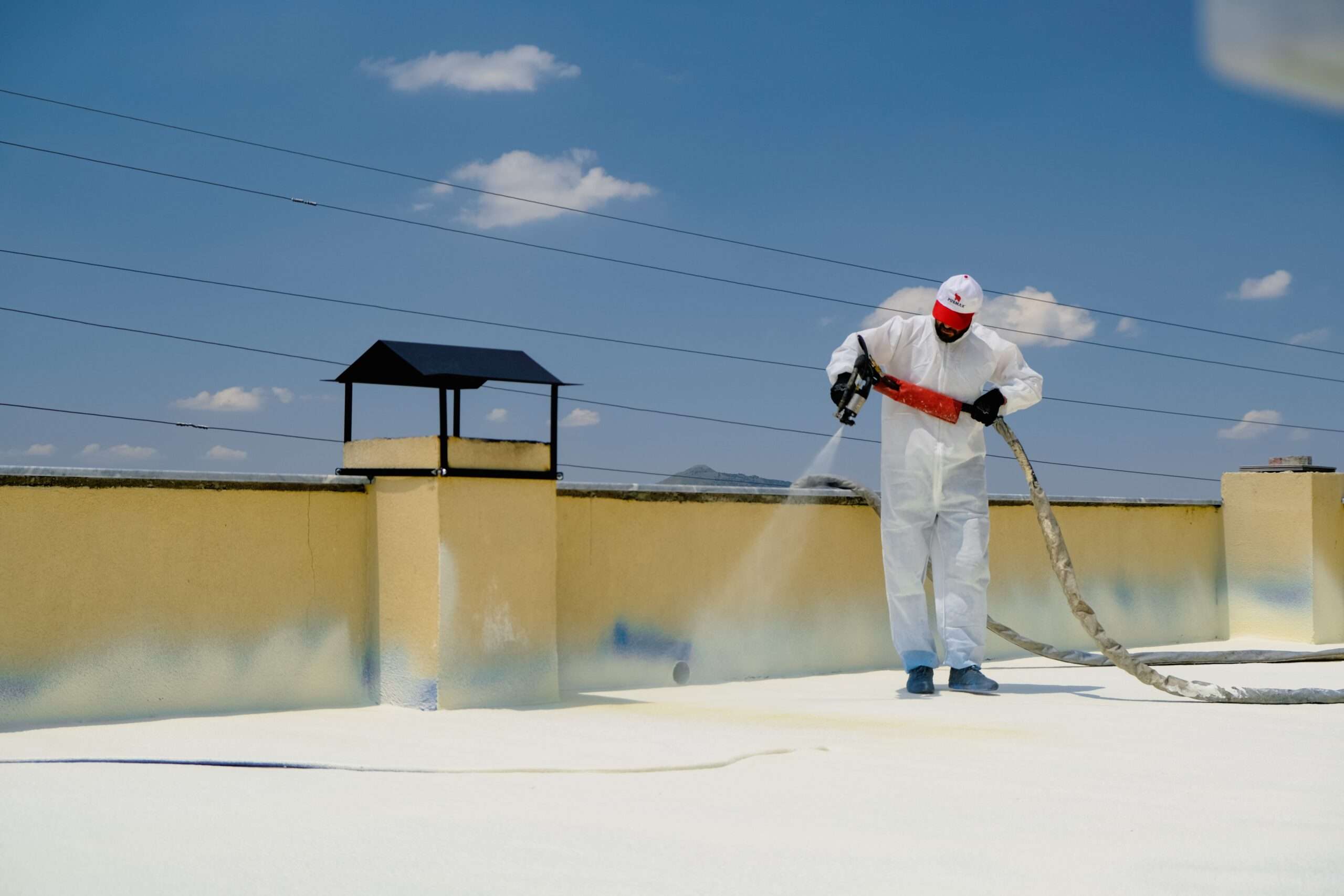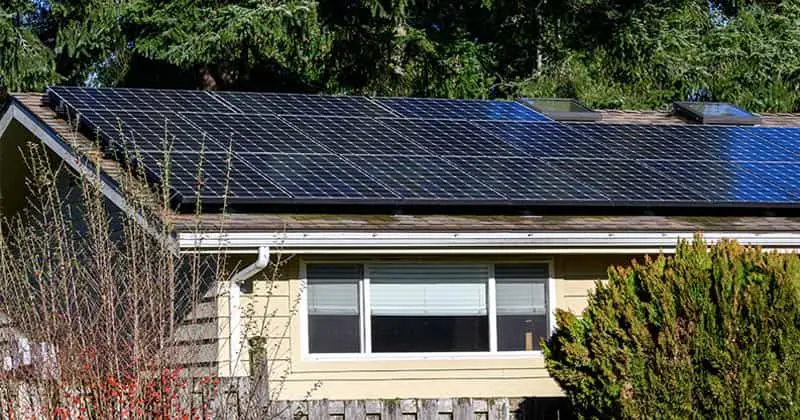In the realm of off-grid living, insulating the bottom of a shipping container becomes a vital consideration that requires careful attention. The challenges of maintaining an optimal internal temperature within this unconventional dwelling necessitate effective insulation strategies. This article delves into the various methods and approaches one can adopt to insulate the bottom of a shipping container, shedding light on the importance of this aspect in ensuring comfortable and energy-efficient living conditions. A thorough examination of the insulation techniques employed in this specific context unveils innovative solutions that can be applied to create a well-insulated and sustainable living environment.

What is shipping container insulation?
Shipping container insulation refers to the process of adding thermal insulation materials to the interior or exterior of a shipping container to control heat transfer and maintain a comfortable temperature inside the container. Insulation helps prevent heat loss during cold weather and minimizes heat gain during hot weather, creating a more energy-efficient and comfortable environment inside the container.
Why is insulation important for shipping containers?
Insulating a shipping container is essential for various reasons. Firstly, it helps regulate the temperature inside the container, protecting the contents from extreme heat or cold. This is particularly crucial for items that are sensitive to temperature fluctuations, such as electronic equipment, perishable goods, or fragile items.
Secondly, insulation provides a barrier against moisture and condensation. Shipping containers are susceptible to moisture buildup, which can lead to mold, corrosion, and damage to the container and its contents. Insulation helps mitigate this issue by creating a controlled environment that minimizes condensation and prevents moisture-related problems.
Furthermore, insulating a shipping container enhances energy efficiency. By reducing heat transfer, insulation helps maintain a stable interior temperature, reducing the need for heating or cooling equipment. This can result in significant energy savings over time, especially in off-grid or remote locations where energy sources are limited or expensive.
What are the benefits of insulating the bottom of a shipping container?
Insulating the bottom of a shipping container offers several advantages. Firstly, it provides additional thermal protection to the container, preventing heat loss or gain through the floor. This is particularly crucial considering that heat tends to rise, and an uninsulated bottom can act as a significant source of heat loss in cold climates.
Secondly, insulating the bottom of a shipping container helps create a more comfortable living or working environment. By minimizing the transfer of cold from the ground, insulation helps maintain a warmer floor temperature, making it more pleasant for occupants. This is especially important for those living or working in the container for extended periods.
Furthermore, insulation helps prevent moisture infiltration from the ground, reducing the risk of mold growth and water damage. Moisture can seep through the floor of a shipping container, leading to a damp and unhealthy environment. Insulation acts as a barrier, protecting the container and its contents from the potential damage caused by moisture.
Types of insulation materials
There are several types of insulation materials commonly used for shipping containers. Each material has its own characteristics, benefits, and limitations. Let’s explore some of the most common options:
1. Fiberglass insulation
Fiberglass insulation is a popular choice due to its affordability and availability. It consists of small glass fibers that trap air pockets, providing excellent thermal insulation. Fiberglass insulation is lightweight and easy to install. However, it can be irritating to the skin and respiratory system if proper precautions are not taken. Additionally, fiberglass insulation may not be as effective in humid environments.
2. Spray foam insulation
Spray foam insulation is a versatile option that provides excellent insulation and air sealing properties. It is sprayed as a liquid that expands and solidifies into a foam, filling gaps and crevices to create a seamless insulation layer. Spray foam insulation offers superior thermal performance and can effectively seal the container against air leakage and moisture infiltration. However, it can be more expensive than other insulation materials and requires professional installation.
3. Reflective insulation
Reflective insulation is typically made of aluminum foil laminated onto a backing material, such as foam or bubble wrap. It works by reflecting radiant heat away from the container, helping to reduce heat gain. Reflective insulation is lightweight and easy to install, making it a popular choice for DIY projects. However, it primarily addresses radiant heat transfer and may not provide as much insulation against conduction or convection.
4. Rigid foam insulation
Rigid foam insulation, also known as foam board insulation, is made of solid panels of foam material. It offers excellent thermal resistance and is highly resistant to moisture. Rigid foam insulation is lightweight, easy to handle, and provides good insulation properties. However, it can be more expensive than other options and may require additional measures to ensure proper sealing and protection against moisture.
5. Cellulose insulation
Cellulose insulation is a eco-friendly option made from recycled paper or natural plant fibers. It is typically blown or dense-packed into cavities, filling the space and providing effective insulation. Cellulose insulation offers good thermal performance and is resistant to fire, insects, and mold. However, it requires professional installation and may require additional measures to prevent moisture absorption.

Factors to consider before insulating the bottom of a shipping container
Before insulating the bottom of a shipping container, several factors should be carefully considered to ensure the success and effectiveness of the insulation. These factors include:
1. Climate and weather conditions
The climate and weather conditions in the location where the shipping container will be situated are crucial factors to consider. Insulation needs vary depending on whether the container will be exposed to extreme cold, high humidity, or intense heat. Understanding the climate and weather patterns will help determine the appropriate insulation material and thickness required to maintain a comfortable and energy-efficient environment inside the container.
2. Moisture and condensation
Moisture and condensation can be significant concerns when insulating the bottom of a shipping container. It is essential to assess the moisture levels in the area and take appropriate measures to prevent moisture infiltration through the floor. Proper insulation, combined with moisture barriers and ventilation systems, can help mitigate condensation issues and reduce the risk of mold growth or water damage.
3. Budget constraints
Budget constraints are another important consideration. Insulation materials vary in price, and the cost can add up depending on the size of the shipping container and the desired level of insulation. It is necessary to evaluate the available budget and explore cost-effective insulation options that meet the desired performance requirements.
4. Health and safety considerations
Health and safety should always be taken into account when selecting and installing insulation. Some insulation materials, such as fiberglass, can cause skin irritation or respiratory issues if not handled properly. It is crucial to follow recommended safety procedures, wear protective gear, and consider alternative insulation options if there are concerns about potential health risks.
Preparation and cleaning
Before installing insulation on the bottom of a shipping container, proper preparation and cleaning are essential to ensure a successful installation. The following steps should be taken:
1. Remove any existing flooring or insulation
If the shipping container already has a floor or existing insulation, it is necessary to remove it before starting the insulation process. This will provide a clean and even surface to work with and avoid any potential issues or complications during installation.
2. Clean the bottom surface of the container
Thoroughly cleaning the bottom surface of the container is crucial to remove any dirt, debris, or residue that could affect the adhesion or installation of the insulation material. Use appropriate cleaning agents and tools to ensure a clean and smooth surface.
3. Repair any existing damages
Inspect the bottom surface of the container for any damages, such as rust, holes, or dents. It is essential to repair these damages before installing insulation to ensure a solid and secure foundation.

Installing insulation on the bottom of a shipping container
Once the preparation and cleaning are complete, the installation of insulation on the bottom of the shipping container can begin. Follow these steps for a successful installation:
1. Measure the dimensions of the container
Accurately measure the dimensions of the container to determine the amount of insulation material needed. Take into account the length, width, and height of the container to ensure a proper fit and coverage.
2. Select the appropriate insulation material
Based on the factors considered earlier, choose the insulation material that best suits the requirements and conditions of the shipping container. Consider factors such as R-value, moisture resistance, durability, and ease of installation.
3. Choose the installation method
Different insulation materials may require specific installation methods. Some materials can be cut and fitted directly onto the bottom surface, while others may need to be sprayed or adhered with adhesive. Follow the manufacturer’s instructions and best practices for the chosen insulation material.
4. Cut and fit the insulation panels
If using insulation panels, cut them to the appropriate size and shape to fit the dimensions of the container’s bottom. Ensure a snug fit and proper coverage, leaving no gaps or areas exposed to prevent thermal bridging.
5. Secure the insulation in place
Use appropriate fastening methods to secure the insulation in place. This may include adhesives, screws, or other suitable fasteners. Ensure the insulation is firmly attached and properly sealed to prevent any shifting or movement.
Sealing and vapor barrier
To enhance the effectiveness of the insulation and prevent moisture-related issues, sealing and installing a vapor barrier are important steps. Follow these guidelines:
1. Apply a sealant to prevent air leakage
To prevent air leakage and ensure maximum thermal insulation, apply a sealant along the edges and seams of the insulation material. This will create a tight seal and minimize heat transfer through gaps or openings.
2. Install a vapor barrier to control moisture
A vapor barrier helps control moisture and prevents condensation from infiltrating the insulation. This barrier should be installed on top of the insulation, facing the inside of the container. It helps maintain a dry and moisture-free environment, reducing the risk of mold growth or water damage.
3. Ensure proper ventilation
Proper ventilation is crucial to prevent moisture buildup and maintain air quality inside the container. Consider installing vents or air vents in strategic locations to allow for air circulation and moisture control. This will help ensure the longevity and performance of the insulation system.
Additional insulation techniques
While insulating the bottom of a shipping container is important, there are additional insulation techniques that can enhance the overall efficiency and insulation capabilities of the container. Consider the following options:
1. Using reflective coatings or paints
Applying reflective coatings or paints on the exterior of the shipping container can help reflect solar radiation and limit heat absorption. This can significantly reduce heat gain through the container walls and roof, complementing the insulation installed on the bottom.
2. Insulating the container walls and ceiling
Insulating the walls and ceiling of the shipping container, in addition to the floor, can further improve the thermal efficiency and overall insulation performance. This helps create a well-insulated and regulated interior environment, enhancing comfort and energy savings.
3. Creating an insulated skirt around the container
Building an insulated skirt around the bottom perimeter of the container can provide an additional layer of insulation and protection against heat loss. This technique is particularly useful in colder climates where heat transfer through the ground is a concern.
Common challenges and solutions
During the insulation process, there may be some common challenges that need to be addressed. Here are a few examples and potential solutions:
1. Preventing pests and rodents
Shipping containers, especially those placed on the ground, are susceptible to pests and rodents seeking warmth or shelter. To prevent infestation, ensure all gaps or openings are properly sealed, and consider using materials with pest-repellent properties. Regular inspections and maintenance can also help detect and address any potential pest issues.
2. Dealing with limited headroom
Shipping containers have limited headroom, which can pose challenges when installing insulation. Choose materials that offer maximum insulation with minimal thickness, such as rigid foam boards or spray foam insulation. Ensure that the insulation does not significantly reduce the available headspace, especially in areas where occupants need to move around comfortably.
3. Maintaining insulation integrity during transportation
Shipping containers are designed to be transported and may experience vibrations, movements, or changes in temperature during transit. To ensure the integrity of the insulation, use proper fastening methods and materials that can withstand transportation conditions. Regular inspections and maintenance should also be conducted to identify and address any insulation issues that may arise.
Cost considerations
Before undertaking the insulation project, it is important to consider the cost implications. This includes both material costs and installation expenses, as well as long-term energy savings. Here are some factors to consider:
1. Material costs
Different insulation materials vary in cost. Fiberglass insulation tends to be more affordable, while spray foam insulation is usually more expensive. Consider the budget available and compare the cost-effectiveness of different options based on the desired insulation performance.
2. Installation costs
Professional installation may be necessary for certain insulation materials, such as spray foam insulation. This will incur additional costs, but it ensures proper installation and maximizes the insulation’s efficiency. For DIY installations, consider the time and effort required for the insulation project.
3. Long-term energy savings
While upfront insulation costs are a consideration, it is essential to evaluate the long-term energy savings that insulation can provide. A well-insulated container can significantly reduce heating or cooling requirements, resulting in ongoing energy savings and potentially offsetting the initial investment over time.
Conclusion
Insulating the bottom of a shipping container is a crucial step in creating a more comfortable, energy-efficient, and durable environment. With various insulation materials and techniques available, it is important to consider factors such as climate, moisture control, budget, and safety when selecting and installing insulation. By properly insulating the bottom, along with the walls and ceiling if desired, a shipping container can be transformed into a sustainable and adaptable space suitable for various applications, such as off-grid living, storage, or mobile offices.




